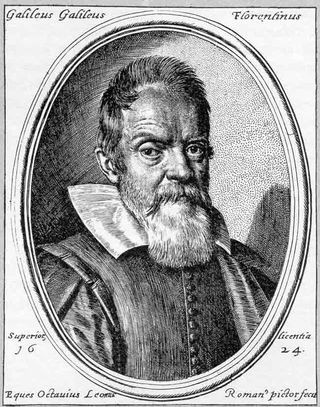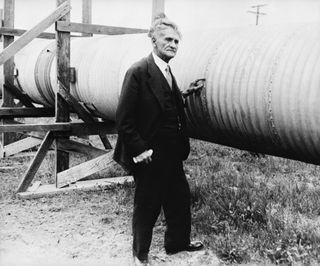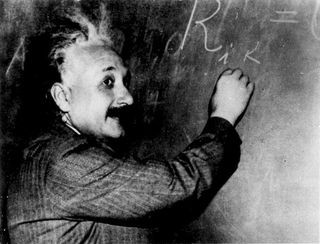Are you curious about How Fast Does Light Travel In Meters Per Second? Light speed, a crucial universal constant, allows us to explore the universe’s past and significantly influences physics and space travel. Understanding this fundamental concept can enhance your appreciation for the cosmos and the science that governs it. With SIXT.VN, you can discover Vietnam’s wonders with ease, just as scientists unravel the mysteries of light. Consider SIXT.VN for seamless travel experiences when planning your Vietnam adventures, making your journey as smooth as a light beam. Unlock exclusive travel tips and recommendations to elevate your next trip to Vietnam.
1. Understanding Light Speed: A Fundamental Constant
How fast does light travel in meters per second? The speed of light in a vacuum is precisely 299,792,458 meters per second (approximately 983,571,056 feet per second). This immutable value, often denoted as “c,” plays a pivotal role in physics and our understanding of the universe.
1.1. The Significance of “c”
The speed of light, represented as “c,” isn’t just a number; it’s a cornerstone of modern physics. Here’s why it matters:
- Universal Speed Limit: According to Albert Einstein’s theory of special relativity, nothing in the universe can exceed the speed of light. As matter approaches this limit, its mass increases infinitely, making it impossible to surpass.
- Defining Measurements: The speed of light is so constant that it is used to define international standard measurements, such as the meter. This ensures precision and consistency in scientific measurements worldwide, according to the U.S. National Institute of Standards and Technology.
- Foundation of Physics: Einstein’s famous equation, E=mc², demonstrates the relationship between energy (E), mass (m), and the speed of light (c). This equation is fundamental to understanding nuclear reactions and the vast amounts of energy contained within matter.
1.2. Light Speed and Space Travel
The speed of light has profound implications for space travel:
- Vast Distances: Space is vast, and the distances between celestial objects are immense. The speed of light helps us measure these distances using light-years.
- Time Dilation: Einstein’s theory also predicts time dilation, where time slows down for objects moving close to the speed of light relative to a stationary observer. This concept is crucial for understanding long-distance space travel.
- Challenges of Interstellar Travel: Reaching even the nearest stars within a human lifetime requires speeds close to that of light, posing significant technological and energy challenges.
2. What is a Light-Year and Why Does It Matter?
What is a light-year? A light-year is the distance light travels in one year, approximately 6 trillion miles (10 trillion kilometers). This measurement is essential for understanding the scale of the universe.
2.1. Understanding Cosmic Distances
A light-year is not a measure of time but of distance, specifically the distance light can travel in one Earth year. To put this into perspective:
- Moon: Light takes about 1 second to travel from the Moon to Earth, meaning the Moon is about 1 light-second away.
- Sun: Sunlight takes approximately 8 minutes to reach Earth, so the Sun is about 8 light-minutes away.
- Alpha Centauri: The nearest star system, Alpha Centauri, is approximately 4.3 light-years away, meaning its light takes 4.3 years to reach us.
2.2. How Long Would It Take Humans to Travel One Light-Year?
Considering the vastness of a light-year, how long would it take humans to travel that distance? Traveling one light-year would take an incredibly long time with current technology.
- Airplane: An airplane traveling at 600 mph (965 km/h) would take approximately 1 million years to travel one light-year.
- Apollo Spacecraft: Using a crewed spacecraft like the Apollo lunar module, the journey would still take around 27,000 years, according to BBC Sky at Night Magazine.
2.3. Peering into the Past
The speed of light allows astronomers to look back in time:
- Distant Objects: When we observe distant stars and galaxies, we are seeing them as they were when the light left them. The farther away an object is, the further back in time we see.
- Early Universe: Light from objects 10 billion light-years away shows us what those objects looked like 10 billion years ago, relatively soon after the Big Bang.
- Big Bang: The Big Bang, which occurred about 13.8 billion years ago, is studied by observing light that has traveled vast distances, giving us insights into the universe’s infancy.
3. Expert Insights on the Speed of Light
To further clarify the concept of light speed, let’s explore some frequently asked questions answered by Dr. Rob Zellem, a staff scientist at NASA’s Jet Propulsion Laboratory.
3.1. What is Faster Than the Speed of Light?
Is anything faster than the speed of light? According to Einstein’s theory of relativity, nothing is faster than the speed of light, which is approximately 300,000 kilometers per second (186,000 miles per second) in a vacuum.
3.2. Is the Speed of Light Constant?
Is the speed of light always the same? The speed of light is a universal constant in a vacuum, such as the vacuum of space. However, light can slow down when it passes through an absorbing medium, such as water or glass.
| Medium | Speed of Light (km/s) | Speed of Light (miles/s) |
|---|---|---|
| Vacuum | 300,000 | 186,000 |
| Water | 225,000 | 140,000 |
| Glass | 200,000 | 124,000 |
3.3. Who Discovered the Speed of Light?
Who first measured the speed of light? One of the first measurements of the speed of light was made by Ole Rømer in 1676, through observations of Jupiter’s moons. High-precision measurements were later achieved in 1879 by the Michelson-Morley Experiment.
3.4. How Do We Know the Speed of Light?
How did scientists determine the speed of light? Ole Rømer measured the speed of light by observing eclipses of Jupiter’s moon Io. He noted that eclipses occurred slightly earlier when Jupiter was closer to Earth, attributing this to the time light takes to travel the varying distance.
4. Historical Efforts to Measure Light Speed
The quest to understand and measure the speed of light has a rich history, involving numerous scientists and experiments.
 Galileo Galilei contemplating the speed of light
Galileo Galilei contemplating the speed of light
4.1. Early Philosophical Debates
The concept of light speed has been contemplated since ancient times:
- Empedocles: In the 5th century BC, Empedocles suggested that light must travel and therefore have a rate of travel.
- Aristotle: Aristotle countered that light, unlike sound, must be instantaneous, a view that prevailed for centuries.
4.2. Galileo’s Experiment
In the 1600s, Galileo Galilei attempted to measure light speed:
- Lantern Experiment: Galileo positioned two people on hills with shielded lanterns. One person uncovered their lantern, and when the other saw the flash, they uncovered theirs.
- Limited Results: The distance was insufficient to accurately measure light speed. Galileo concluded that light traveled at least 10 times faster than sound.
4.3. Ole Rømer’s Astronomical Observations
Ole Rømer’s observations of Jupiter’s moon Io provided a breakthrough:
- Eclipse Timings: Rømer recorded precise timings of Io’s eclipses to create an astronomical clock for sailors.
- Doppler Effect: He observed that eclipses appeared to lag when Earth and Jupiter moved away from each other and showed up ahead of time when they approached.
- Light Travel Time: Rømer determined that light took measurable time to travel from Io to Earth, estimating the speed of light at approximately 124,000 miles per second (200,000 km/s).
4.4. James Bradley’s Stellar Aberration
James Bradley improved upon Rømer’s work in 1728:
- Stellar Position: Bradley based his calculations on the change in the apparent position of stars caused by Earth’s orbit around the Sun.
- Improved Accuracy: He estimated the speed of light at 185,000 miles per second (301,000 km/s), accurate to within about 1% of the actual value.
4.5. Terrestrial Experiments: Fizeau and Foucault
The mid-1800s saw new attempts to measure light speed on Earth:
- Hippolyte Fizeau: Fizeau used a rotating toothed wheel to interrupt a light beam, measuring the time it took for the light to travel to a mirror 5 miles (8 km) away and back.
- Leon Foucault: Foucault employed a rotating mirror, refining the experiment and achieving similar accuracy. Both methods came within about 1,000 miles per second (1,609 km/s) of the actual speed of light.
5. Michelson’s Contributions and the Aether Theory
Albert A. Michelson made significant contributions to measuring light speed and challenging existing theories.
 Dr. Albert A. Michelson and his vacuum tube for measuring light speed
Dr. Albert A. Michelson and his vacuum tube for measuring light speed
5.1. Early Experiments
Michelson’s early experiments refined existing methods:
- Replication of Foucault’s Method: In 1879, Michelson replicated Foucault’s method, increasing the distance between mirrors and using high-quality optics.
- Accurate Measurement: Michelson’s result of 186,355 miles per second (299,910 km/s) was the most accurate measurement for 40 years.
5.2. Later Refinements
Michelson continued to refine his measurements:
- Mountain Top Experiments: He flashed lights between mountain tops with carefully measured distances for increased precision.
- Vacuum Tube Experiment: Shortly before his death in 1931, Michelson built a mile-long depressurized tube to simulate a near-vacuum, minimizing the effect of air on light speed.
5.3. The Michelson-Morley Experiment
Michelson’s work extended beyond mere measurement:
- Wave or Particle: Michelson studied the nature of light, addressing whether it was a wave or a particle.
- Luminiferous Aether: He and his colleague Edward Morley assumed light moved as a wave requiring a medium, termed the “luminiferous aether.”
- Interferometer: They built a sophisticated interferometer to detect the aether.
5.4. The Revolutionary Non-Discovery
The Michelson-Morley experiment yielded surprising results:
- No Evidence of Aether: Michelson found no evidence of the luminiferous aether, indicating light could travel through a vacuum.
- Nobel Prize: Michelson won a Nobel Prize for his precise non-discovery, revolutionizing our understanding of light.
6. Einstein, Special Relativity, and E=mc²
Einstein’s theory of special relativity transformed our understanding of light, energy, and mass.
 Albert Einstein writing on a blackboard
Albert Einstein writing on a blackboard
6.1. The Famous Equation
Einstein’s equation E=mc² is a cornerstone of modern physics:
- Mass-Energy Equivalence: The equation describes the relationship between mass (m) and energy (E), with the speed of light squared (c²) as the conversion factor.
- Nuclear Reactions: Small amounts of mass contain immense energy, as demonstrated in nuclear reactions and nuclear bombs.
- Implications for Physics: The equation shows how much energy is contained within matter, highlighting the significance of light speed.
6.2. Immutable Constant
Einstein’s theory requires the speed of light to be an immutable constant:
- Vacuum Travel: Light moves through a vacuum, not an aether.
- Constant Speed: Light moves at the same speed regardless of the observer’s speed.
- Time Dilation: Observers moving at near-light speed experience time dilation, slowing down their perception of time.
6.3. Universal Speed Limit
Einstein’s theory establishes the speed of light as the universe’s speed limit:
- Mass Increase: Objects with mass cannot reach the speed of light because their mass would become infinite.
- Infinite Energy: The energy required to move an object to light speed would also become infinite, which is impossible.
7. What Appears to Go Faster Than Light?
While nothing within the universe can exceed light speed, the universe itself expands faster than light.
7.1. Expansion of the Universe
The expansion of the universe defies local speed limits:
- Expansion Rate: The universe expands at a rate of a little more than 42 miles (68 kilometers) per second for each megaparsec of distance.
- Megaparsec: A megaparsec is 3.26 million light-years.
- Receding Galaxies: Galaxies at greater distances appear to recede faster, eventually exceeding the speed of light due to the expansion of space.
7.2. General Relativity
Einstein’s theory of general relativity explains this phenomenon:
- Local vs. Distant Physics: Special relativity governs speed limits within the universe, while general relativity allows different behavior at cosmological distances.
- Distant Galaxies: Galaxies far away can recede at any speed without violating special relativity, as they are not bound by local speed limits.
8. When Does Light Slow Down?
Although light speed is constant in a vacuum, it slows down when traveling through materials.
 Light refracting through a diamond
Light refracting through a diamond
8.1. Refractive Index
The speed of light varies depending on the medium:
- Slowing Effect: Light slows down when traveling through materials.
- Refractive Index: The refractive index measures how much a material slows down light.
- Bending Light: Light bends when interacting with particles, reducing its speed.
8.2. Examples of Light Speed Reduction
Examples illustrate how different materials affect light speed:
| Medium | Speed Reduction |
|---|---|
| Earth’s Atmosphere | Slows by three ten-thousandths of light speed |
| Diamond | Slows to less than half its typical speed |
8.3. Trapping and Stopping Light
Researchers have explored methods to slow and even stop light:
- Ultra-Cold Atoms: Light can be trapped inside ultra-cold clouds of atoms, as demonstrated in a 2001 study.
- Exceptional Points: A 2018 study proposed stopping light at “exceptional points” where light emissions intersect and merge.
- Vacuum Slowing: Scientists have even slowed down single photons in a vacuum, demonstrating that light can travel slower than its official speed.
9. Can We Travel Faster Than Light?
The possibility of faster-than-light travel remains a topic of science fiction and theoretical physics.
9.1. Warp Speed and Sci-Fi
Faster-than-light travel is a staple of science fiction:
- Common Trope: Warp speed enables characters to traverse vast distances easily.
- Theoretical Physics: While not guaranteed, faster-than-light travel is explored theoretically.
- Moving Space: The idea involves moving space around a spaceship rather than moving the ship itself.
9.2. Challenges and Theories
Seth Shostak, an astronomer at the SETI Institute, explains the need for faster-than-light travel in science fiction:
- Interstellar Travel: Reaching the next star system at current rocket speeds would take hundreds of thousands of years.
- Warp Drive: Science fiction postulates ways to overcome the speed of light barrier to advance stories more quickly.
- Space-Time Bubble: One theoretical concept involves folding a space-time bubble around a spaceship.
9.3. Implications for Humanity
Faster-than-light travel could transform humanity’s reach:
- Reaching Distant Corners: Overcoming the speed of light barrier would allow humanity to explore the farthest reaches of the universe.
- Future Physics: Future physicists will need to push the boundaries of our understanding to achieve such breakthroughs.
10. Plan Your Vietnam Trip with SIXT.VN
Now that you’ve journeyed through the cosmos to understand the speed of light, let SIXT.VN guide you through Vietnam with the same precision and speed.
10.1. Seamless Travel Solutions
SIXT.VN offers a range of services to make your trip to Vietnam unforgettable:
- Tailored Itineraries: Receive expert advice on crafting a travel plan that suits your interests and timeframe.
- Airport Transfers: Enjoy hassle-free and safe airport pickup services.
- Hotel Bookings: Access a variety of hotel options to match your budget and preferred locations.
- Tours and Activities: Book tickets for top attractions in Hanoi and nearby regions.
- Flight Bookings: Secure the best flight deals with convenient scheduling.
- Guided Tours: Explore Hanoi with professional and engaging tour guides.
10.2. Why Choose SIXT.VN?
SIXT.VN provides numerous advantages for your Vietnam adventure:
- Convenience: Simplify your travel planning with a one-stop solution for all your needs.
- Reliability: Trust in our dependable services to ensure a smooth and enjoyable trip.
- Expert Support: Benefit from our knowledgeable team ready to assist you every step of the way.
- Time-Saving: Quickly book and arrange all your travel essentials through our easy-to-use platform.
10.3. Explore Vietnam Effortlessly
SIXT.VN ensures your Vietnam exploration is as smooth as the propagation of light:
- Cultural Immersion: Delve into Vietnam’s rich culture and heritage.
- Scenic Beauty: Discover stunning landscapes and iconic landmarks.
- Relaxation and Adventure: Whether you seek relaxation or adventure, SIXT.VN has you covered.
- Create Memories: Make lasting memories with our comprehensive travel services.
10.4. Contact Us
Ready to explore Vietnam? Contact SIXT.VN today:
- Address: 260 Cau Giay, Hanoi, Vietnam
- Hotline/WhatsApp: +84 986 244 358
- Website: SIXT.VN
FAQ: Understanding the Speed of Light
Q1: How fast does light travel in meters per second in a vacuum?
A1: Light travels at approximately 299,792,458 meters per second in a vacuum.
Q2: Why is the speed of light important in physics?
A2: The speed of light is crucial because it is a universal constant and a cornerstone of Einstein’s theory of relativity.
Q3: What is a light-year, and how is it used?
A3: A light-year is the distance light travels in one year and is used to measure vast distances in the universe.
Q4: Can anything travel faster than the speed of light?
A4: According to Einstein’s theory, nothing within the universe can travel faster than the speed of light.
Q5: Does light always travel at the same speed?
A5: Light travels at a constant speed in a vacuum, but it slows down when passing through mediums like water or glass.
Q6: Who first measured the speed of light accurately?
A6: Ole Rømer made one of the first measurements, and Albert A. Michelson later achieved high-precision measurements.
Q7: What is the significance of the equation E=mc²?
A7: This equation demonstrates the relationship between energy, mass, and the speed of light, showing that small amounts of mass contain immense energy.
Q8: How does the expansion of the universe relate to the speed of light?
A8: The universe expands faster than light, but this expansion does not violate special relativity because it involves the expansion of space itself.
Q9: What is “warp speed” in science fiction, and is it possible?
A9: Warp speed is a fictional concept allowing faster-than-light travel, and while theoretical physics explores possibilities, it remains speculative.
Q10: How can SIXT.VN help me explore Vietnam?
A10: SIXT.VN offers tailored travel itineraries, airport transfers, hotel bookings, tours, and more to ensure a seamless and memorable trip to Vietnam.
Understanding how fast does light travel in meters per second provides a glimpse into the fundamental laws governing our universe. Just as light illuminates the cosmos, SIXT.VN illuminates your path to an unforgettable Vietnam adventure.



